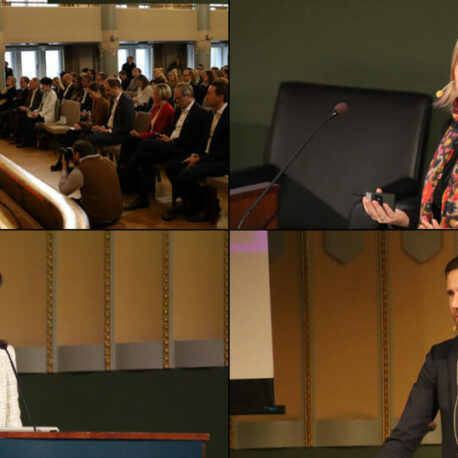
- Finance Finland has responded to the European Commission’s targeted consultation on the implementation of the EU Sustainable Finance Disclosures Regulation (SFDR).
- Finance Finland considers the objectives of the SFDR to be supportable but does not think they are currently appropriately achieved.
- The regulation includes ambiguous concepts and gaps in data, which increase the risk of greenwashing.
- The SFDR includes too many disclosure requirements, some of which also overlap. From the retail investor perspective, the volume of information is excessive, and the objectives of the regulation fall short in this respect.
- The costs of the regulation are disproportionate to its benefits.
The EU sustainable finance framework has been designed to steer financing in a more sustainable direction through the consideration of sustainability factors. The idea of sustainable finance is to promote sustainable projects and businesses that support the environmental goals of the European Green Deal. Key areas of the sustainable finance framework include the EU Taxonomy Regulation, the EU Corporate Sustainability Reporting Directive (CSRD) and the EU Sustainable Finance Disclosures Regulation (SFDR).
The EU Sustainable Finance Disclosures Regulation (SFDR) entered into force in 2021. The purpose of the SFDR is to improve the transparency of the financial market’s sustainability measures, prevent greenwashing and facilitate the consideration of sustainability factors in investments. Financial entities are required to disclose, for example, the level on which their products take sustainability risks into account. Last September, the European Commission launched a targeted consultation on the regulatory package, calling for views on the functioning and further development of the regulation.
In Finance Finland’s opinion, the objectives of the SFDR are still supportable. The regulation has increased the provision of sustainable investment products and also successfully increased knowledge of the potentially adverse environmental and social impacts of investment decisions. However, not all of the SFDR’s original objectives, such as improving investor protection and informing investors, have been achieved as planned.
“It is excellent that the Commission launched a consultation on the SFDR. The sustainable finance framework is such a massive and complex package that only time will tell how the regulation succeeds in meeting its given objectives. It is vital that the Finnish financial sector can communicate its own position to the legislators in good time before a concrete legislative proposal is made”, says Johan Granlund, legal adviser at Finance Finland.
Good aims are not always enough
Although the SFDR has already been in application for nearly three years, it is far from complete or perfect. Instead of being prepared and launched as a finalised, functional package, the regulation has received gradual updates after its entry into force – an approach which has given no end of grief to financial sector companies. In Finance Finland’s opinion, the supportable objectives of the regulation must be maintained also going forward, but the regulation must be developed so that its objectives can be achieved in an appropriate and cost-efficient way without risking that the sector’s actions could be interpreted as greenwashing.
At the moment, the biggest problems include ambiguous concepts, the insufficient availability of data and the excessive amount of disclosure obligations. The SFDR does not serve the end investor in the best possible way, either.
“The concepts of the regulation are unclear and partially conflicting with those of the Taxonomy Regulation, for example. Furthermore, there is not enough reliable data to enable principal adverse impact disclosures. The regulation’s current disclosure obligations cause a significant administrative burden on companies, and their benefits for retail investors are unclear. The level of costs is also still disproportionate to the benefits of the regulation. We want to bring these shortcomings to the Commission’s attention so that the otherwise supportable objectives of the regulation can be redeemed in full”, Granlund explains.
“The sustainable finance framework is such a massive and complex package that only time will tell how the regulation succeeds in meeting its given objectives.”
JOHAN GRANLUND, Legal Adviser

The Commission’s legislative proposal on the SFDR can be expected to arrive at the start of 2025, at the earliest. The careful review of consultation responses is time-consuming work, which is further delayed by the European elections next summer.
“Although the actual legislative proposal will take a good while still, it is crucial that Finance Finland is already active and contributing to the final result. We are monitoring the process and are actively in contact with European decision-makers whenever the need arises”, Granlund assures.
Looking for more?
Other articles on the topic

Clear and uniform sustainable finance regulation enhances the EU’s competitiveness

The EU Sustainable Finance Disclosures Regulation has promise but lacks in execution

Will the wild west of ESG ratings soon be history? – New regulation facilitates the assessment of sustainability factors

The financial sector has power to halt biodiversity loss – International experts presented their measures in Helsinki

